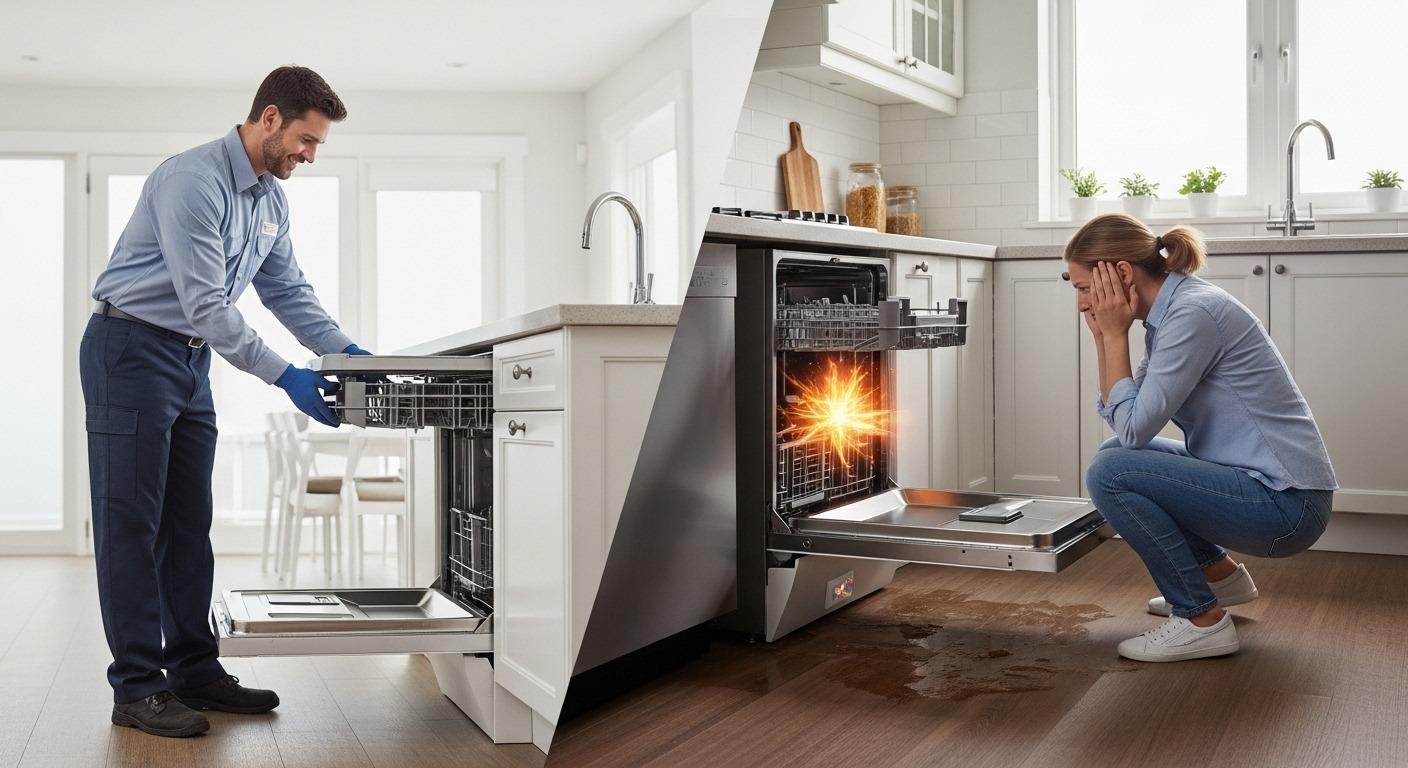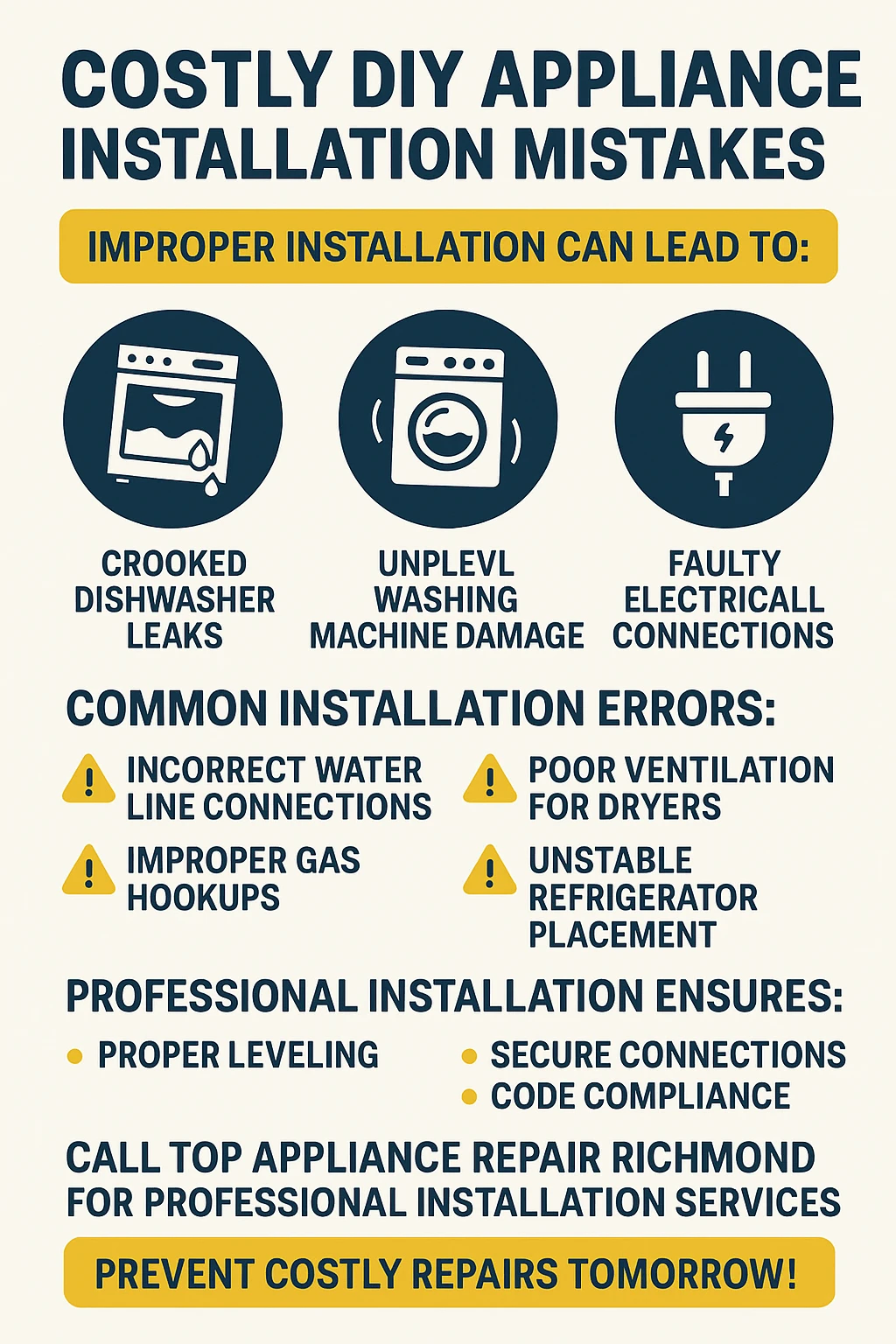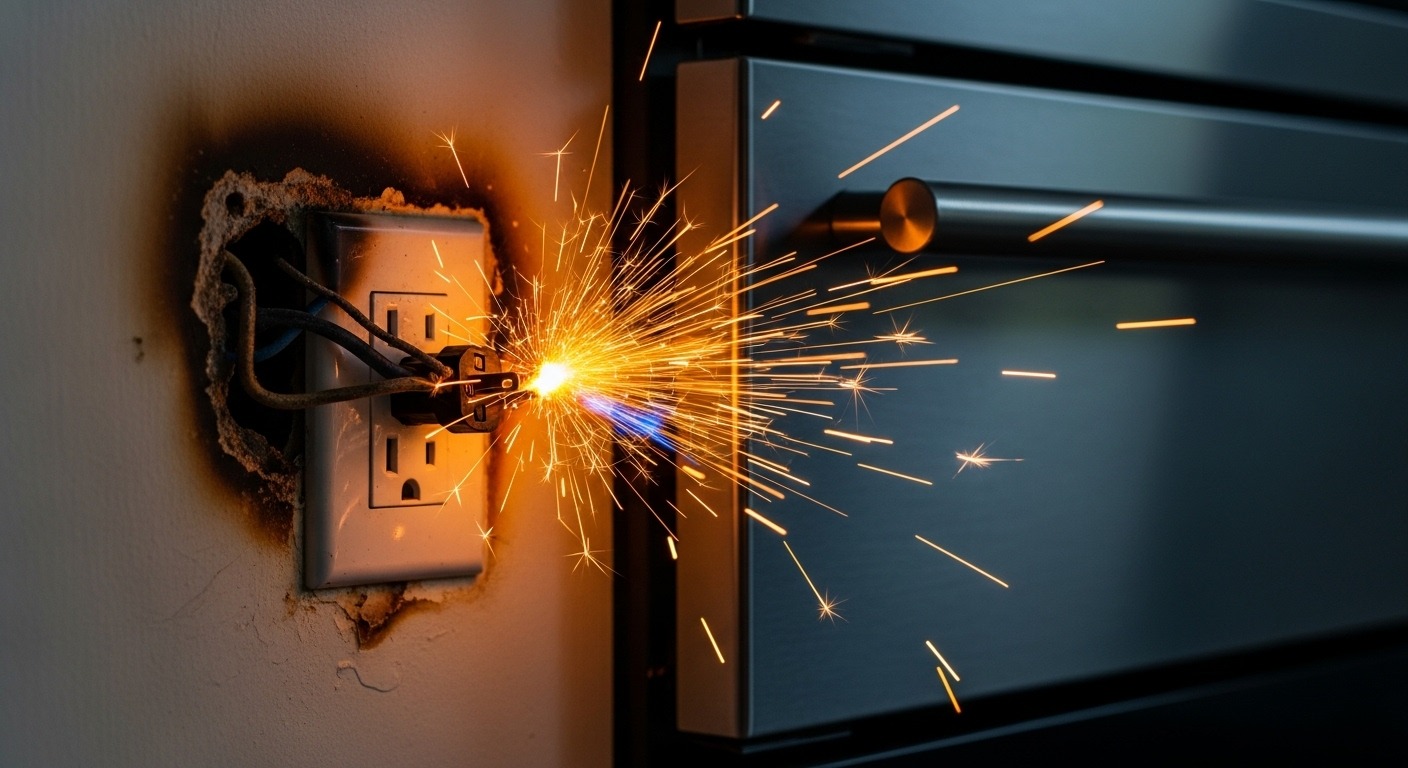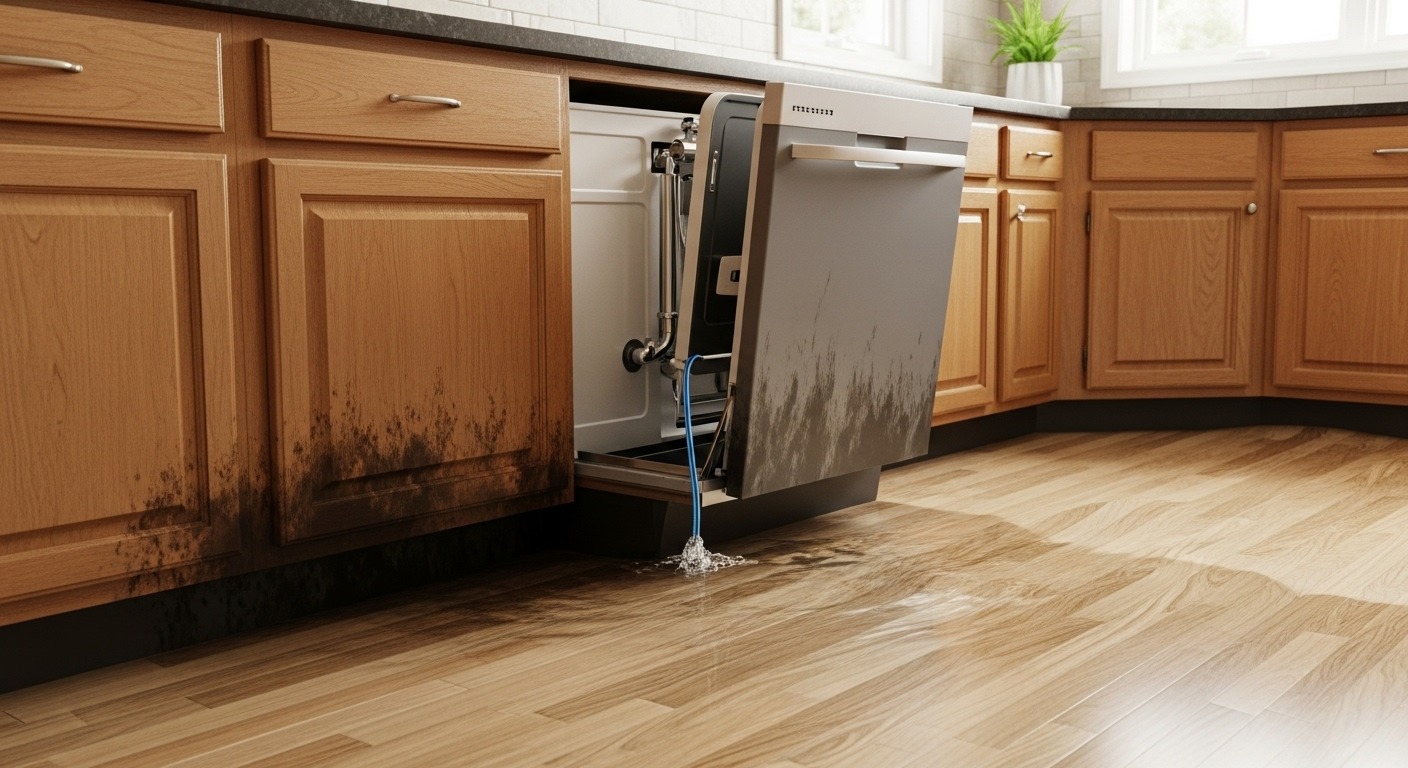Richmond Appliance Installation Mistakes That Lead to Expensive Repairs (And How to Avoid Them)
Wondering why your new appliance broke down just months after installation despite following all the setup instructions? You’re probably dealing with one of Richmond’s most costly homeowner nightmares – installation mistakes that void warranties and turn simple fixes into expensive repair bills that could have been easily avoided.Richmond homeowners face a perfect storm of appliance installation challenges that make professional setup absolutely critical for protecting your investment. Our coastal climate creates unique corrosion risks that standard installation guides never mention, while BC’s strict building codes require specific materials and techniques that differ significantly from other provinces. Heritage homes built between the 1940s and 1960s add another layer of complexity with outdated electrical systems that can’t safely support modern appliances without proper modifications.The financial stakes couldn’t be higher when you consider that professional appliance installation typically costs just $108 to $250, but a single DIY mistake can void your warranty completely and result in repair bills exceeding $800. What makes this especially frustrating is that over 90% of appliance operating problems stem from improper installation rather than manufacturing defects. This means most expensive repairs are completely preventable with proper setup from the beginning.The consequences extend far beyond simple repair costs when you factor in potential safety hazards from electrical fires, gas leaks, or water damage that can affect your entire home. Richmond’s unique environmental factors, combined with our area’s complex building requirements, create installation scenarios that even experienced DIY enthusiasts rarely anticipate until problems develop.
Key Outtakes:
- Professional appliance installation costs $108-$250 while DIY mistakes can void warranties and result in $800+ repair bills
- Richmond’s coastal environment requires marine-grade materials and specific installation techniques to prevent corrosion damage
- Over 90% of appliance operating issues stem from improper installation rather than manufacturing defects
- BC’s building codes are among Canada’s strictest, making professional installation essential for warranty protection
- Electrical, plumbing, and gas connection errors pose serious safety hazards including fires, floods, and carbon monoxide poisoning

Electrical Connection Mistakes That Damage Richmond Appliances
Understanding electrical connection requirements becomes absolutely critical when you realize that installation errors cause more warranty claim denials than actual product defects, especially in BC where strict building codes create additional compliance challenges. The complexity of modern appliance electrical systems, combined with Richmond’s unique housing characteristics, creates scenarios where even minor connection mistakes can lead to catastrophic failures that insurance companies won’t cover. Misaligned and faulty electrical connections represent one of the most dangerous and expensive mistakes homeowners make during appliance installation. These loose connections create a buzzing sound when you plug appliances into outlets, but the real problem lies beneath the surface where arcing occurs between connection points. This arcing generates heat that can ignite surrounding materials, leading to electrical fires that cause thousands of dollars in property damage. The coastal humidity in Richmond accelerates this process by creating additional corrosion on connection points that weren’t properly sealed during installation.Voltage requirements and circuit issues create another layer of complexity that catches many DIY installers off guard. Some appliances require specific voltage or dedicated circuits to function correctly, with dryers typically needing 240-volt outlets while smaller appliances like microwaves use standard 120-volt connections. Installing the wrong voltage configuration doesn’t just prevent proper operation – it can permanently damage expensive electronic components that cost more to replace than the original appliance purchase price. Richmond’s older homes often have electrical panels that weren’t designed to handle multiple high-voltage appliances simultaneously, creating circuit overload situations that trip breakers repeatedly or cause voltage fluctuations that harm sensitive electronics.Heritage home electrical compatibility problems represent a unique challenge that sets Richmond apart from newer suburban areas. Homes built in the 1940s through 1960s often have grounding issues that affect modern appliance installations, with original wiring systems that lack the three-pronged outlets required for safe appliance operation. These older electrical systems frequently have aluminum wiring that creates compatibility problems with modern appliances designed for copper connections, leading to connection failures that can cause fires or permanent appliance damage. The challenge becomes even more complex when heritage home electrical systems have been partially updated over the decades, creating a patchwork of different wiring standards that require professional assessment to ensure safe appliance integration.GFCI protection oversights create warranty voidance situations that catch homeowners completely by surprise when they need to file claims. BC electrical codes require specific GFCI protection for appliances installed in kitchens, laundry rooms, and other areas where water exposure is possible, but DIY installers frequently overlook these requirements because they’re not clearly explained in manufacturer installation guides. When appliances fail due to moisture-related electrical problems, warranty claims are automatically denied if required GFCI protection wasn’t properly installed according to provincial codes. Professional installers understand these local requirements and provide the necessary documentation to maintain warranty coverage, while DIY installations lack this critical compliance verification.
Misaligned and faulty electrical connections represent one of the most dangerous and expensive mistakes homeowners make during appliance installation. These loose connections create a buzzing sound when you plug appliances into outlets, but the real problem lies beneath the surface where arcing occurs between connection points. This arcing generates heat that can ignite surrounding materials, leading to electrical fires that cause thousands of dollars in property damage. The coastal humidity in Richmond accelerates this process by creating additional corrosion on connection points that weren’t properly sealed during installation.Voltage requirements and circuit issues create another layer of complexity that catches many DIY installers off guard. Some appliances require specific voltage or dedicated circuits to function correctly, with dryers typically needing 240-volt outlets while smaller appliances like microwaves use standard 120-volt connections. Installing the wrong voltage configuration doesn’t just prevent proper operation – it can permanently damage expensive electronic components that cost more to replace than the original appliance purchase price. Richmond’s older homes often have electrical panels that weren’t designed to handle multiple high-voltage appliances simultaneously, creating circuit overload situations that trip breakers repeatedly or cause voltage fluctuations that harm sensitive electronics.Heritage home electrical compatibility problems represent a unique challenge that sets Richmond apart from newer suburban areas. Homes built in the 1940s through 1960s often have grounding issues that affect modern appliance installations, with original wiring systems that lack the three-pronged outlets required for safe appliance operation. These older electrical systems frequently have aluminum wiring that creates compatibility problems with modern appliances designed for copper connections, leading to connection failures that can cause fires or permanent appliance damage. The challenge becomes even more complex when heritage home electrical systems have been partially updated over the decades, creating a patchwork of different wiring standards that require professional assessment to ensure safe appliance integration.GFCI protection oversights create warranty voidance situations that catch homeowners completely by surprise when they need to file claims. BC electrical codes require specific GFCI protection for appliances installed in kitchens, laundry rooms, and other areas where water exposure is possible, but DIY installers frequently overlook these requirements because they’re not clearly explained in manufacturer installation guides. When appliances fail due to moisture-related electrical problems, warranty claims are automatically denied if required GFCI protection wasn’t properly installed according to provincial codes. Professional installers understand these local requirements and provide the necessary documentation to maintain warranty coverage, while DIY installations lack this critical compliance verification.
Water Line and Plumbing Installation Errors
Water-related installation mistakes create some of the most expensive and disruptive problems Richmond homeowners face, with damage extending far beyond the appliance itself to include flooring, cabinetry, and structural components that can cost tens of thousands of dollars to repair properly. The combination of our area’s water pressure variations and coastal climate conditions creates installation scenarios that standard guides never address, leading to failures that appear months or years after initial setup. Incorrect hose connections and leak problems occur when water supply lines are kinked, clogged, or incorrectly connected during installation. Insufficient water supply affects appliance performance and can cause internal components to overheat when they don’t receive adequate cooling water flow. More seriously, improperly secured connections can fail suddenly, releasing hundreds of gallons of water into your home before you discover the problem. Richmond’s water pressure fluctuations, caused by our hilly terrain and aging municipal infrastructure, put additional stress on poorly installed connections that might hold temporarily but fail when pressure spikes occur during peak usage periods.Dishwasher drain line mistakes represent one of the most disgusting and health-threatening installation errors that homeowners can make. The missing high loop installation allows sewer backup to flow directly into your dishwasher, creating a situation where contaminated water enters the appliance that’s supposed to clean your dishes. Without this critical safety feature, any stoppage in your sink drain causes sewer water to back up into the dishwasher, and you’ll only discover the problem when you open the door to find contaminated water throughout the unit. This creates both a major health hazard and an expensive cleanup situation that often requires professional decontamination services.Wrong drain pipe sizing and installation kit oversights create connection failures that lead to persistent water damage problems. Using incorrect size drain pipes or forgetting to purchase required dishwasher installation kits results in loose connections that leak continuously but slowly enough that damage accumulates over time before becoming obvious. These slow leaks cause mold growth, wood rot, and subfloor damage that requires extensive reconstruction once discovered. The problem becomes especially serious in Richmond’s humid climate where moisture problems develop faster and spread more extensively than in drier regions.Coastal corrosion considerations represent a unique installation challenge that generic guides completely ignore, but which can destroy appliances within years instead of decades. Richmond’s marine climate causes salt air to accelerate corrosion on metal components, requiring marine-grade fittings and protective coatings that standard installation hardware can’t provide. Standard brass and steel fittings that work perfectly in inland locations fail rapidly when exposed to our salt-laden air, especially when installation creates small gaps where moisture can accumulate. Professional installers familiar with coastal conditions know to use specific materials and sealing techniques that prevent this accelerated deterioration, while DIY installations typically use whatever hardware comes with the appliance or is available at local home improvement stores.
Incorrect hose connections and leak problems occur when water supply lines are kinked, clogged, or incorrectly connected during installation. Insufficient water supply affects appliance performance and can cause internal components to overheat when they don’t receive adequate cooling water flow. More seriously, improperly secured connections can fail suddenly, releasing hundreds of gallons of water into your home before you discover the problem. Richmond’s water pressure fluctuations, caused by our hilly terrain and aging municipal infrastructure, put additional stress on poorly installed connections that might hold temporarily but fail when pressure spikes occur during peak usage periods.Dishwasher drain line mistakes represent one of the most disgusting and health-threatening installation errors that homeowners can make. The missing high loop installation allows sewer backup to flow directly into your dishwasher, creating a situation where contaminated water enters the appliance that’s supposed to clean your dishes. Without this critical safety feature, any stoppage in your sink drain causes sewer water to back up into the dishwasher, and you’ll only discover the problem when you open the door to find contaminated water throughout the unit. This creates both a major health hazard and an expensive cleanup situation that often requires professional decontamination services.Wrong drain pipe sizing and installation kit oversights create connection failures that lead to persistent water damage problems. Using incorrect size drain pipes or forgetting to purchase required dishwasher installation kits results in loose connections that leak continuously but slowly enough that damage accumulates over time before becoming obvious. These slow leaks cause mold growth, wood rot, and subfloor damage that requires extensive reconstruction once discovered. The problem becomes especially serious in Richmond’s humid climate where moisture problems develop faster and spread more extensively than in drier regions.Coastal corrosion considerations represent a unique installation challenge that generic guides completely ignore, but which can destroy appliances within years instead of decades. Richmond’s marine climate causes salt air to accelerate corrosion on metal components, requiring marine-grade fittings and protective coatings that standard installation hardware can’t provide. Standard brass and steel fittings that work perfectly in inland locations fail rapidly when exposed to our salt-laden air, especially when installation creates small gaps where moisture can accumulate. Professional installers familiar with coastal conditions know to use specific materials and sealing techniques that prevent this accelerated deterioration, while DIY installations typically use whatever hardware comes with the appliance or is available at local home improvement stores.
Gas Appliance Installation Safety Hazards
Gas appliance installation represents the highest-risk category for DIY mistakes, where errors don’t just damage equipment but can cause explosions, carbon monoxide poisoning, or fires that threaten lives and destroy homes. The complexity of gas line installation, combined with BC’s strict safety regulations and Richmond’s seismic considerations, creates scenarios where professional installation becomes absolutely mandatory for both safety and legal compliance.Incorrect gas line sizing creates a cascade of problems that affect both appliance performance and safety systems designed to prevent dangerous conditions. If the pipe is too small, it limits fuel supply to appliances, reducing performance and causing them to operate inefficiently or fail completely during high-demand periods. Conversely, oversized gas lines can create pressure issues that cause appliances to operate dangerously, with flame patterns that can ignite nearby materials or produce incomplete combustion that generates deadly carbon monoxide. Richmond’s elevation changes and varying gas pressure throughout different neighborhoods require specific calculations that account for local conditions, making proper sizing a complex technical challenge rather than a simple measurement task.Poor ventilation and clearance issues become especially critical in Richmond’s coastal climate where temperature inversions can trap gases at ground level rather than allowing them to disperse safely. Inadequate ventilation causes gas buildup that
